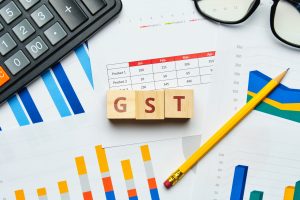 With the inflation rate ruling at an all-time high, there is hardly any scope for GST rate rationalisation, say sources.
With the inflation rate ruling at an all-time high, there is hardly any scope for GST rate rationalisation, say sources.
The current price situation leaves hardly any scope for rationalisation of GST rates on goods and services, sources said on Wednesday.
Goods and services are taxed in four slabs of 5 per cent, 12 per cent, 18 per cent and 28 per cent under the GST regime. It was being considered to reduce these tax slabs possibly to three, an exercise which would have involved raising taxes on some items and a reduction in others. Besides, gold and gold jewellery attract a 3 per cent tax.
But with the inflation rate ruling at an all-time high, there is hardly any scope for GST rate rationalisation, sources said.
Sources further said that while the economy was recovering from the impact of Covid in 2021, geopolitical tension this year would again have bearing on it.
“The Council in the past was not unmindful of the then prevailing situation,” sources said.
Under GST, essential items are either exempted or taxed at the lowest slab, while luxury and demerit items attract the highest slab. Luxury and sin goods attract cess on top of the highest 28 per cent slab. This cess collection is used to compensate states for the revenue loss due to the GST rollout.
The GST council last year set up a panel of state ministers, headed by Karnataka Chief Minister Basavaraj Bommai, to suggest ways to augment revenue by rationalising tax rates and correcting anomalies in tax rates.
At the time of GST implementation on July 1, 2017, the Centre had agreed to compensate states for 5 years till June 2022, and protect their revenue at 14 per cent per annum over the base year revenue of 2015-16.
The GST Council over the years has often succumbed to the demands of the trade and industry and lowered tax rates. For example, the number of goods attracting the highest 28 per cent tax came down from 228 to less than 35.
Sources further said that with the implementation of GST in 2017, around 18 cesses were abolished. The collection from these cesses in 2016-17 was Rs 56,641 crore.
With the implementation of GST, these cesses were subsumed into GST and the collections are shared with the states as per the devolution formula.
The only major cesses that remain are the GST compensation cess, health and education cess and cess for central road and infrastructure fund. The collection from these cesses has helped fund various government schemes and development activities.
The collection from road and infrastructure cess was over Rs 2.03 trillion in 2021-21, while for the current fiscal the budget estimate is over Rs 1.38 lakh crore.
The collection from GST compensation cess last fiscal was Rs 1.05 trillion, while the budget has pegged it at Rs 1.2 trillion in the current fiscal.
Collection from health and education cess was Rs 47,307 crore last fiscal, and is budgeted to rise to Rs 53,846 crore this fiscal.
Source: Business Standard
https://www.business-standard.com/article/economy-policy/inflationary-concerns-may-delay-gst-rate-rationalisation-report-122052501352_1.html
For more News like this, Subscribe TAXO today


